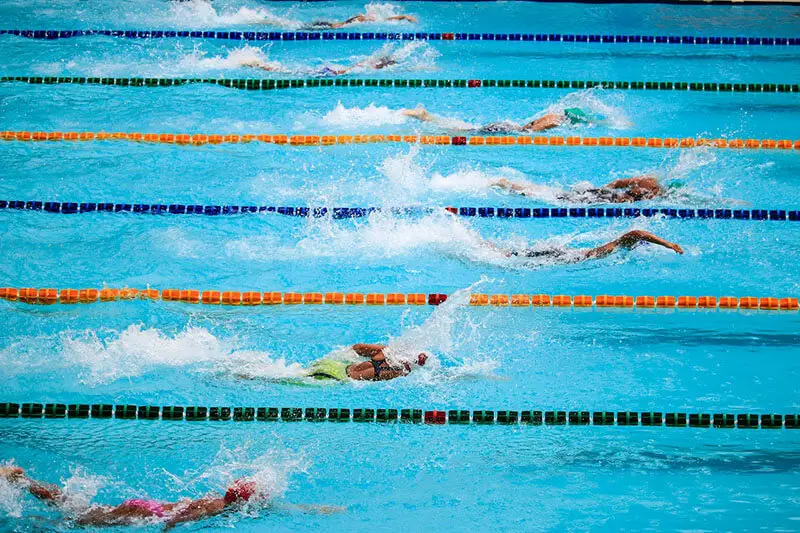When it comes to comparing swimmers’ best swim times, it can be extremely confusing because the pool lengths they swam in may be slightly different depending on where they are in the world.
This is because some parts of the world still use the imperial system (the US being the most famous example), whereas most countries use the metric system.
Thus, several distinctions between pool lengths have been made to account for the differences in these measurement systems: LCM pools, SCM pools, and SCY pools.
These abbreviations stand for: Long Course Meters (LCM, a 50-meter long pool), Short Course Meters (SCM, a 25-meter long pool), and Short Course Yards (SCY, a 25-yard long pool).
Keep reading on to learn more about the differences between these pool lengths and how you can convert your swim times between them.
What does SCM mean in swimming?
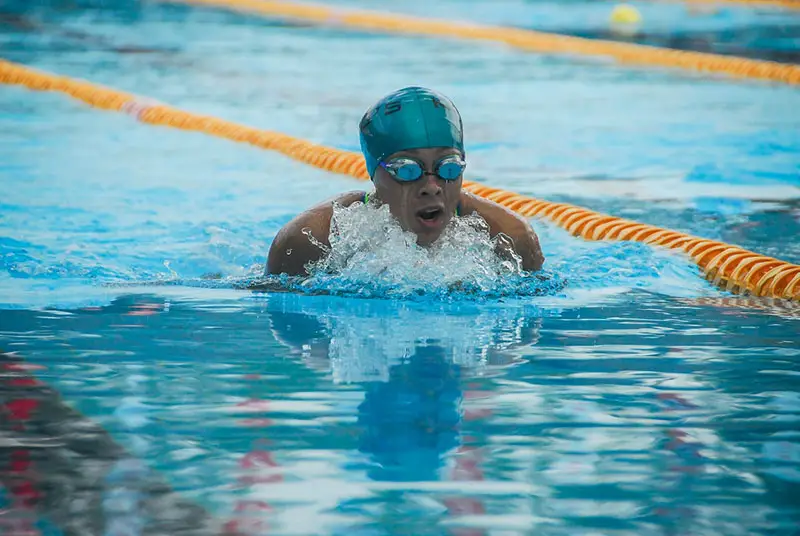
SCM stands for Short Course Meters which refers to a pool that is 25-meters in length.
This is the most commonly used pool length in swimming competitions around the world (barring Olympic swimming competitions which use a LCM pool).
Since a SCM pool is half the length of a LCM pool, you can expect the swim time for a SCM pool to be faster because swimmers can kick off the wall twice as often which gives them a temporary burst of speed.
This can be a double-edged sword, however, if a swimmer has mediocre tumble turns and underwater technique. This means that they are at greater risk of losing out to a competitor who excels at them, but it could just as easily be used to their advantage if they are also good at them.
What does LCM mean in swimming?
LCM stands for Long Course Meters which refers to a pool that is 50-meters in length.
At Olympic swimming events, this is the standard length of their pools. Therefore, it has a lot of reverence and prestige since world records are often set and history is made in front of the world in LCM pools.
What does SCY mean in swimming?
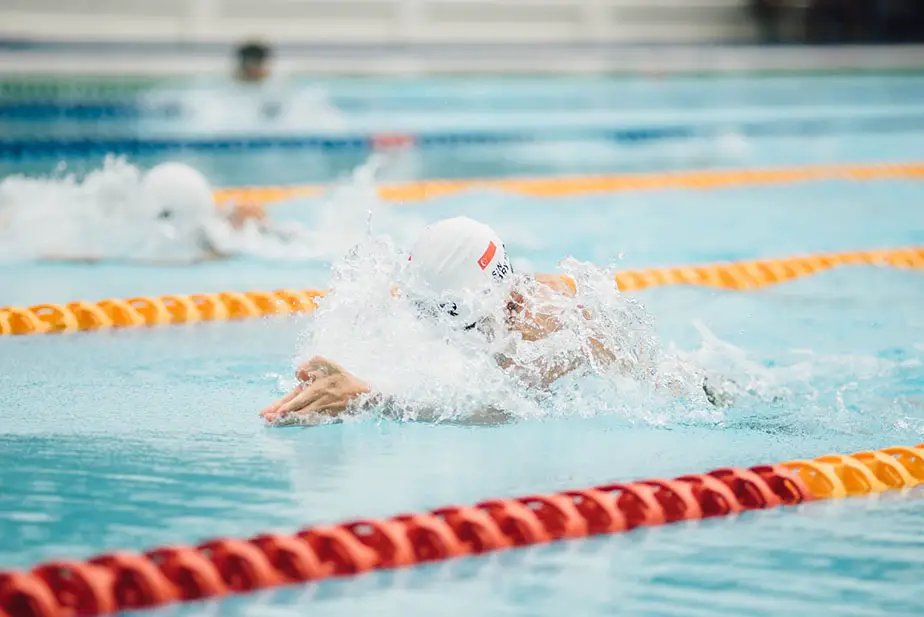
SCY stands for Short Course Yards which refers to a pool that is 25-yards in length.
For Americans, this is the standard pool length you are accustomed to swimming in as most swimming competitions in the US are done in SCY pools.
SCY gets a special mention because, unlike the previous pool lengths which are both measured in meters, this one is measured in yards – don’t you just love it when the metric and imperial systems conflict?
For those unaware, a 25-yard pool is NOT the same length as a 25-meter pool. A SCY pool converted to meters is only 22.86 meters, so it is shorter than a SCM pool by 2.14 meters.
A few things to note here. First, it is the shortest pool length out of the three types at about 91% of the length of a SCM pool.
Second, even though it is somewhat close in length to a SCM pool, in the interest of competitive integrity you cannot compare the two without compensating for the fact that SCY pools are shorter, therefore the times are going to be faster as a matter of course.
Since SCY to SCM and vice versa are not apples-to-apples comparisons, how can we make this fair? To address this, there are formulas used to convert swim times between the various pool lengths.
How do you convert from SCY to SCM?
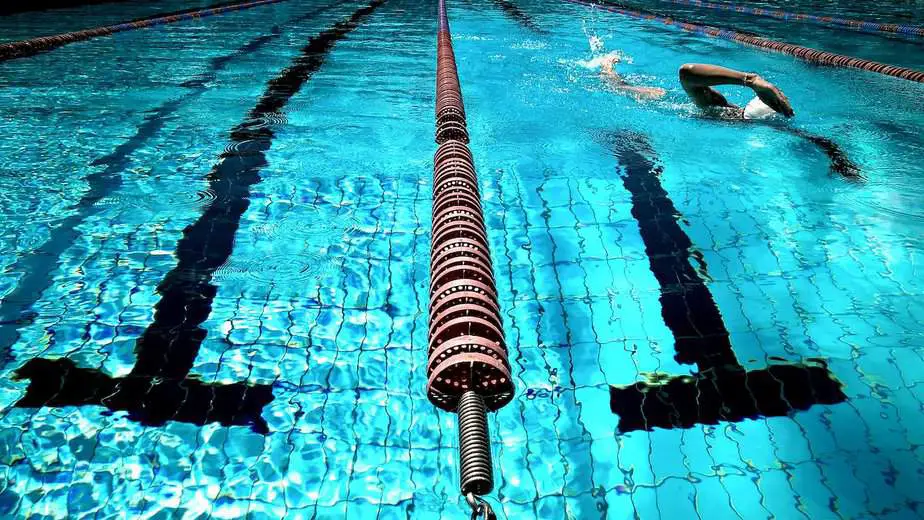
Before I begin, it is important to keep in mind that these conversions are estimates. There is no perfect conversion method and the end result is still only our best educated guess. With that in mind, let’s begin.
Mathematically, we know that one yard is 0.914 meters. Converted in the other direction, one meter is 1.0936 yards. Keep these numbers in mind.
How might you calculate someone swimming a 50-yard breaststroke in a 25-yard pool and convert that to SCM times?
As an example, let’s say Joe swam 50 yards in a SCY pool in 33.25 seconds. Converting to meters, Joe swam a total distance of 45.72 meters (50 * 0.914), but what we want to know is how long that would’ve taken him if he swam an additional 4.28m to match the length of a SCM pool.
This difference between 45.72-meters (25-yards) and 50-meters is around a factor of 1.0936 as mentioned previously, so for the sake of simplicity, most swim time conversion tools use a conversion factor of 1.11 (1.0936 plus 0.0164 to account for the effect the extra distance has on a swimmer’s pace).
So we would multiply Joe’s 33.25Y (short course yards’ time) by 1.11, and we get 36.91S (short course meters). Now, the conversion is complete.
How complex should the conversions be?
You might be shocked at the simplicity of the SCY to SCM conversion. Why doesn’t it factor in obvious things like athletic ability, age, and gender between swimmers? What about which stroke they used?
This delves into the very complicated question of how complex should the calculations be? Also, it is hard to quantify how much of an impact factors like these can have on a swimmer (e.g. does one swimmer being one year older make that much of a difference?)
Plus, it might not even make much of a difference to the end result – all of this complexity might’ve only resulted in Joe getting a time of 36.94S instead of 36.91S. Was it really worth the hassle to try to account for every single variable for a negligible difference?
How do you convert from SCM to LCM?
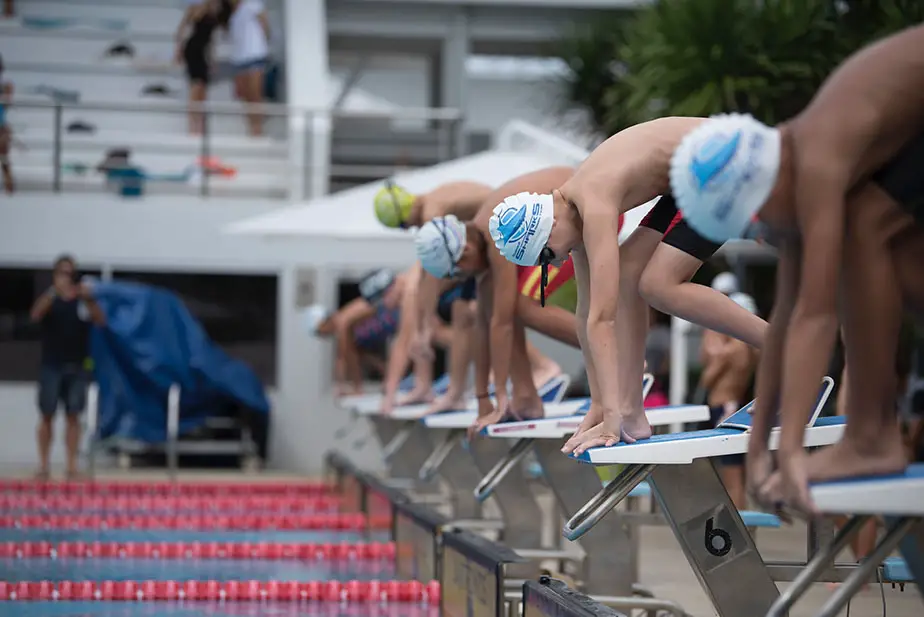
So, converting from SCY to SCM is pretty straightforward, but what about converting from SCM to LCM?
This is a bit more difficult because we need to factor in the impact of the turn and kick on time (if there is even an impact).
The conversion gets even more confusing when trying to convert, say, a 1,650-yard time to a 1,500-meter time (SCY to LCM). Not only is the distance different, but the amount of turns and kicks are different too.
Another simple approach to the conversion is to add 2% to the time when converting from SCM to LCM to account for the fewer turns.
That said, the differences in turning speed across athletes, swim strokes, and the other aforementioned factors is usually significant enough to warrant a more complex formula.
Rather than do these calculations on your own, you can just use the various swimming time conversions online that will factor in more variables than the simple conversion methods used in this article.
- SwimSwam’s conversion tool
- Swimming World Magazine’s conversion tool
- TeamUnify’s conversion tool
- Omnicalculator’s conversion tool
- Hy-Tek’s conversion tool
Accounting for imprecise pool lengths
To complicate matters further, sometimes recreational pools are not built to the exact standards of pools used in professional events.
Therefore, do not be surprised if your local swimming pool is a little longer or shorter than exactly 25-yards/25-meters. Sometimes the difference can be significant, such as a 20-yard pool or a 33-yard pool.
Who knows, maybe you are actually swimming much farther than you originally thought if your pool’s length is longer than you thought, unintentionally giving you a better workout.
In cases like this, another formula will need to be applied to “correct” the results recorded in these pools so that it is in line with times recorded in standard pool lengths.
The exact formula will differ depending on the pool, but it should be similar to the formula used to convert swim times between the official pool lengths.
At the end of the day, no conversion tool is perfect and all results are just estimates. The only way for a swimmer to know for sure how fast they can swim in SCY/SCM/LCM pools is to swim in all of them.

